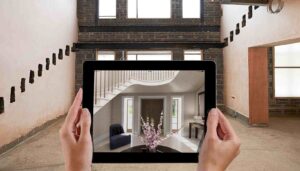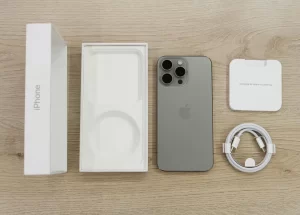In today’s digital age, the field of interior design has undergone a significant transformation, leveraging technology to offer virtual consultations that are both convenient and effective. Whether you’re an established interior designer looking to expand your client base or someone with a passion for design seeking to monetize your skills, this comprehensive guide will provide you with valuable insights and strategies to successfully earn from virtual interior design consultations.
Contents
ToggleThe Rise of Virtual Interior Design Consultations
Virtual interior design consultations have gained popularity due to their flexibility, accessibility, and ability to cater to clients globally. This approach allows designers to connect with clients remotely, offering design solutions and recommendations without the need for physical meetings. This trend has been accelerated by advancements in communication technology, making it feasible to conduct detailed consultations via video calls, emails, and online collaboration tools.
Getting Started with Virtual Interior Design Consultations
1. Showcase Your Expertise and Portfolio
– Professional Portfolio: Develop a professional portfolio showcasing your previous interior design projects. Highlight different styles, themes, and client preferences to demonstrate your versatility and creativity.
– Design Style: Define your design style, whether it’s modern, contemporary, minimalist, eclectic, or any other niche. Having a distinct style helps attract clients who resonate with your aesthetic preferences.
2. Setting Up Your Virtual Consultation Practice
– Communication Tools: Select reliable communication tools for virtual consultations, such as Zoom, Skype, or Google Meet. Ensure these platforms support screen sharing and high-definition video for effective communication and collaboration.
– Digital Design Software: Familiarize yourself with digital design software like AutoCAD, SketchUp, or RoomSketcher. These tools enable you to create detailed floor plans, 3D renderings, and mood boards to visualize and present design concepts to clients.
3. Establishing Your Online Presence
– Professional Website: Create a professional website that showcases your interior design services, portfolio, client testimonials, and contact information. A visually appealing and user-friendly website enhances your credibility and attracts potential clients.
– Social Media Platforms: Utilize social media platforms such as Instagram, Pinterest, and Houzz to showcase your design projects, share tips and trends, and engage with a broader audience interested in interior design.
Strategies to Profit from Virtual Interior Design Consultations
1. Consultation Packages and Pricing
– Service Packages: Offer different consultation packages tailored to client needs, such as basic design advice, room layout planning, color consultations, or full-service design packages. Clearly outline what each package includes and its corresponding pricing structure.
– Hourly Rates vs. Flat Fees: Determine whether to charge clients based on hourly rates or flat fees for consultations. Consider the complexity of the project, your expertise, and market rates when establishing your pricing strategy.
2. Virtual Design Services
– Design Concept Presentations: Prepare comprehensive design concept presentations including mood boards, color schemes, furniture layouts, and material selections. Use digital tools to visualize design ideas and present them effectively during virtual consultations.
– Product Recommendations: Provide clients with curated lists of furniture, decor items, and materials that align with their design preferences and budget. Include links to online retailers or local vendors where clients can purchase recommended products.
3. Client Engagement and Collaboration
– Virtual Walkthroughs: Conduct virtual walkthroughs of client spaces using video calls to assess existing layouts, measurements, and design challenges. This allows you to gather necessary information and provide personalized design recommendations.
– Interactive Design Sessions: Engage clients in interactive design sessions where they can actively participate in the design process. Solicit feedback, address questions or concerns, and collaborate on refining design concepts to meet client expectations.
4. Additional Revenue Streams
– Affiliate Marketing: Partner with home decor brands or online retailers through affiliate marketing programs. Recommend products to clients and earn commissions on purchases made through your referral links.
– E-Books and Courses: Create and sell e-books or online courses on interior design tips, DIY projects, or room makeover guides. Monetize your expertise and reach a broader audience interested in enhancing their home interiors.
Marketing Your Virtual Interior Design Services
1. Search Engine Optimization (SEO)
– Keyword Optimization: Optimize your website and online content with relevant keywords such as “virtual interior design consultations,” “online interior decorator,” or “remote interior design services.” This improves your visibility in search engine results and attracts organic traffic.
– Local SEO: If you offer services in specific regions or cities, optimize your SEO strategy to target local clients searching for interior design services in their area.
2. Content Marketing
– Blog Posts and Articles: Maintain a blog on your website where you regularly publish articles on interior design trends, decorating tips, client case studies, and design project highlights. Share valuable insights to showcase your expertise and attract potential clients.
– Visual Content: Share high-quality images and videos of your design projects across social media platforms and your website. Visual content captivates your audience and reinforces your brand as a reputable interior design service provider.
3. Client Testimonials and Referrals
– Client Reviews: Feature testimonials and reviews from satisfied clients on your website and social media profiles. Positive feedback builds trust and credibility, encouraging potential clients to choose your services for their interior design needs.
– Referral Programs: Implement a referral program where satisfied clients can refer friends, family, or colleagues to your virtual interior design services. Offer incentives such as discounts on future consultations or exclusive design offers.
Legal and Ethical Considerations
– Client Confidentiality: Maintain strict confidentiality agreements to protect client information shared during virtual consultations. Ensure secure communication channels and data encryption methods to safeguard sensitive information.
– Contractual Agreements: Create clear contractual agreements outlining project scope, deliverables, payment terms, and intellectual property rights. Contracts help prevent misunderstandings and establish professional boundaries with clients.
Conclusion
Monetizing your interior design skills through virtual consultations offers a rewarding opportunity to showcase your creativity, expertise, and design solutions to clients worldwide. By leveraging digital tools, establishing a strong online presence, and implementing effective marketing strategies, you can build a successful virtual interior design practice. Focus on delivering exceptional client experiences, staying updated on design trends, and continuously improving your skills to thrive in the competitive landscape of online interior design services.
For further insights into starting or expanding your virtual interior design business, visit [Havenly](https://havenly.com/) for tips and resources.
Embrace the opportunities of virtual interior design consultations, transform spaces, and embark on a journey where design passion meets profitability.
For more similar info :










